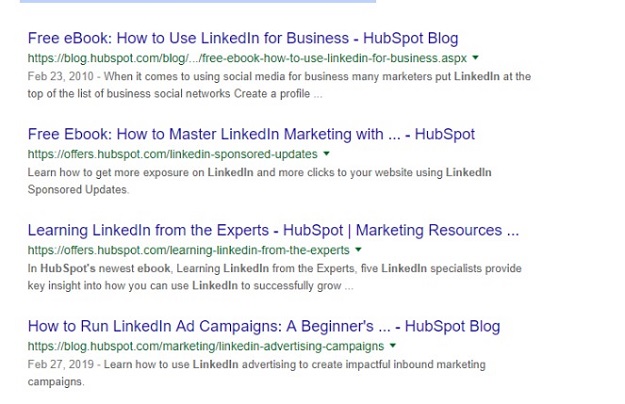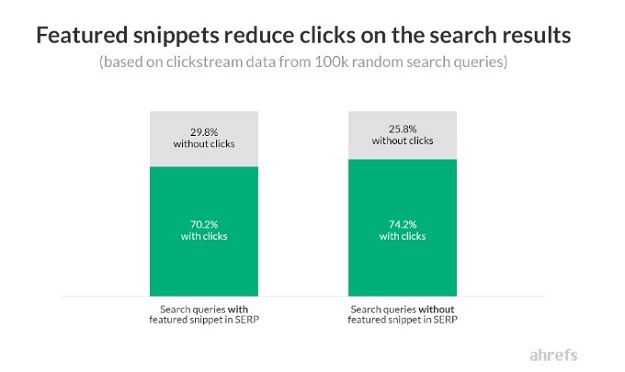Did you know, paid searches improve organic traffic?
Did you know, keyword stuffing can lead to blacklisting?
Did you know, the above two points are lies?
With the outburst of content marketing, today, it has become extremely easy to pass on misinformation as facts. At the same time, with the rising popularity of SEO and Digital marketing, it has become difficult to find credible information in one place.
This is why I have put together my best SEO strategies (supported by real-life case studies) to drive your website traffic, regardless of the size of your business.
Read on.
Stealing competitor links
Even after optimising your website as best as possible, if you still cannot outrank your competitors and drive more organic traffic to your website, the answer comes down to just one factor – Good Backlinks. A lot of them.
And the thing with quality backlinks is that they can’t be begged, bought or borrowed, but stealing? Let’s see.
Step#1: Listing down the competition
Employ your noggin and list down your target keywords. Run a quick Google search. Take the first 10 results of the search. That’s your competition.
Step#2: Analysing competitor backlinks
Take the URLs of the first 10 organic results of earlier Google search and run them through any Backlink-checker tool.
For instance, Ahrefs provides the most diverse categories of results for a thorough analysis.
Finally, create a list of all the backlinks and analyse those links with the help of tools like RankCracker, Inspyder Backlink Monitor, etc.
This will allow you to eliminate broken, repeated, low-quality links and you will be ready for the next step.
Step#3: Replicating backlinks
This is the time to put some manual efforts and going through each one of these links.
Some links will be in the form of comments, guest posts, forum discussions and posts, etc.
So you simply have to start recreating these links for your own website in the same way – post a comment, engage in a forum, connect for contributing a guest post.
In the end, you will have a directory of your own backlinks that you can keep a check upon.
Building a linkable asset
A linkable asset is exactly that – an asset.
From a digital marketing perspective, it is a valuable piece of content (in any form) that people willingly link back to. Resultantly, it makes your page rank higher, increases the visibility, generates more leads and drives significantly more traffic to your website.
So let’s see which kind of asset can you build for your domain and gain the spotlight.
#1. Infographics-GIFographics
Simply put, infographics make the audience stick around your content longer. And if you want to understand “why”, here is a great interactive infographic (with a whopping 21.7k backlinks) to answer that question:
Anyway, let’s see how you can get quality backlinks with your visual asset.
# Outreach to websites that actively post infographics. You can use SEO tools, such as Ahrefs to filter out the most relevant results.
This increases your chances of getting backlinks but if you’re confident that your content can be valuable to others as well, go ahead and pitch.
# Research new infographic ideas through the successful infographics’ concepts of other niches than yours.
For instance, here’s an amazing infographic about Female Entrepreneurs by USC Marshall.
This is a successful and proven content from which you can draw inspiration and design other concepts like
i. The most successful startups run by Women
ii. The student entrepreneurs
And there will be high chances of your inspired concepts performing well with the same vertical as well.
#2. How-to/Definitive guides
How-to guides on any topic are no-brainers for success.
They are comprehensive, extensive and practical tutorials which are actively sought by the knowledge-hungry part of the internet.
For instance, Ahrefs’ guide about How To Do Keyword Research for SEO has gained good 4.8K shares and over 400 referring domains.
These guides get tons of backlinks for the simple reason that bloggers would rather link to one single (all-encompassing) information source than a bunch of different ones.
– Stealing links: If you have put in insane efforts to create your guide (as it should have been), and you’re sure that it is better than every other definitive guide on the subject… let it be known.
– Once again, find out the backlinks you want to target.
– Find out why your guide is better, I.e., If the other guide targets only a small group of people, whereas your guide is as thorough as possible.
– Reach out.
Because why would anyone want to link to a ‘less definitive’ guide?
– Promoting and re-promoting: Whenever you launch a powerful piece of content, promote it as much as possible.
Email announcements, paid campaigns, personal outreach, everything will work like a charm.
Then every time you update or re-write this content with new facts, rinse and repeat.
Why is it important?
The earlier versions of your guide might be for an old version of certain technology. OR there might be a new study in town which contradicts some of the earlier facts.
Bottom line is that if your guide is about iPhone X, it will become irrelevant after the next model’s release and someone else might even steal your links.
Now, this was an extreme example but you get the idea.
Some other kinds of linkable assets that you can claim links for are, coined terms, research and studies, online tools, video series, award mentions.
The most important thing to remember is that no matter how awesome and extensive your content is, you still need to seed the promotion of that content. It is a myth that good content will speak for itself without any help because it does need your help to make it visible enough to the audience.
Updating and republishing old content
Time moves forward, the world changes, new strategies get invented and just like that your old blogs need some updating in order to catch up.
However not every old blog was probably driving traffic to your website. So how do you select which posts you want to invest your efforts in?
Let’s see.
#1. Find your best performing (old) posts
These are the low hanging fruits of your website. You can discover them through
Traffic: Check out through blog analytics for the last couple of months and find out which old posts are bringing traffic to your site.
Social Shares: Determining the number of social shares for any post can also help you in finding the right post to update.
Keywords: If there are some keywords that you want to rank on, then rummage through your old posts and find out if you have any existing piece of content written for those keywords.
#2 Keep trends and content relevancy in mind
Statistics are surely important, but in today’s social media-driven digital market, trends beat any metric-driven campaign.
In the end, the audience for which you are creating content should find it relevant, useful, or entertaining.
What to remember while republishing old posts?
#1. Do not change the keywords in the title of your post, even if you are modifying the whole title.
#2. Keep the URL same, i.e., instead of publishing a brand new post, update the older post. Publishing a new post can flick it from SERP on account of content duplication.
#3. For no apparent reason, but it is always a great idea to add an editor’s note about the original publishing date of the post. It builds transparency and credibility.
#4. Publish the content and get on with its promotion.
Reclaiming links
This SEO tactic with majorly depends upon your internet presence or what type of business you own.
While big brands can survive and then thrive based on this technique alone, small to medium businesses will need to invest a little more effort to reclaim their links.
To put it simply,
– Find out any mention of your name, product, service, business, achievement or anything else that you own the rights to.
– See if they have linked those mentions to your site.
– If not, request them to add your link.
And it is as easy to do as it sounds.
Step#1. Set up daily email alerts for your brand-specific keywords (and remember to exclude your own website).
This can be easily done with tools like Buzzsumo.
Step#2. You can bulk search URLs or manually check each webpage. Just search for your domain name in the source code of the page.
Step#3. List down the contacts, website owners, bloggers and start reaching out to them.
Co-marketing campaigns
Co-marketing campaigns are when:
Two companies or brands with similar audience come together → work in collaboration for a piece of content → promote it among their own audiences → reap the results together.
The goal is to get twice as much traffic and twice as many leads.
However, instead of a piece of content, it could also be an event, a webinar or simple swapping of guest posts.
What is the best way to collaborate?
Since there can be as many kinds of content as you can creatively imagine, there can be as many ways to collaborate as well.
From videos to blogs, brands are collaborating for every possible content piece and it is nothing but a successful strategy.
Let’s see some examples.
#1. Moz and Wistia’s video content collaborations
#2. Twitter’s holler about Hubspot’s webinar about Twitter on Twitter.

#3. Hubspot’s eBook collaboration with Linkedin

These content mediums can also serve as great promotion platforms. For instance, You can write a blog post about your co-marketing video series campaign or a webinar.
And the results will flow in.
Things to remember while deciding the terms of collaboration
Unfortunately, deciding to collaborative with a partner does not even cover the first step of the campaign. There are many things which you must ensure and agree upon before the commencement of the project.
So make sure you have the following points cleared out.
# The creation medium (video, eBook, blog, etc), topics and content to cover
# Your final goals from the campaign
# Ownership agreement of content about what will be created by whom.
# The content hosting platform
# Project timeline and durations
# Promotional plans, revenue and profits sharing
Ranking content in Google snippets
Google’s featured snippets are the new age testimonials of credibility and are sure-shot ways of driving traffic to your website. In fact, some would say it is better than having the #1 ranking. But are they?
According to Ahrefs, featured snippets rather have a negative impact on clicks.
Nonetheless, you can score a snippet for your blog in a few easy steps.
Step#1. Use an analytics tool to find out your direct competitors’ snippets and optimise your own content according to the same keywords.
Step#2. Think like your target audience and while researching for your next blog topic, consider the questions in “people also ask” column of the search.
Step#3. Keywords are the key to snippet but also, answering multiple questions in your content can help you gain the spot.
Lastly,
SEO is an ongoing process, and not a one time solution for positive marketing outcomes.
Setting up a system of these processes might take a while but once done, it only translates into one thing – A gradual and definite hike in organic traffic.







